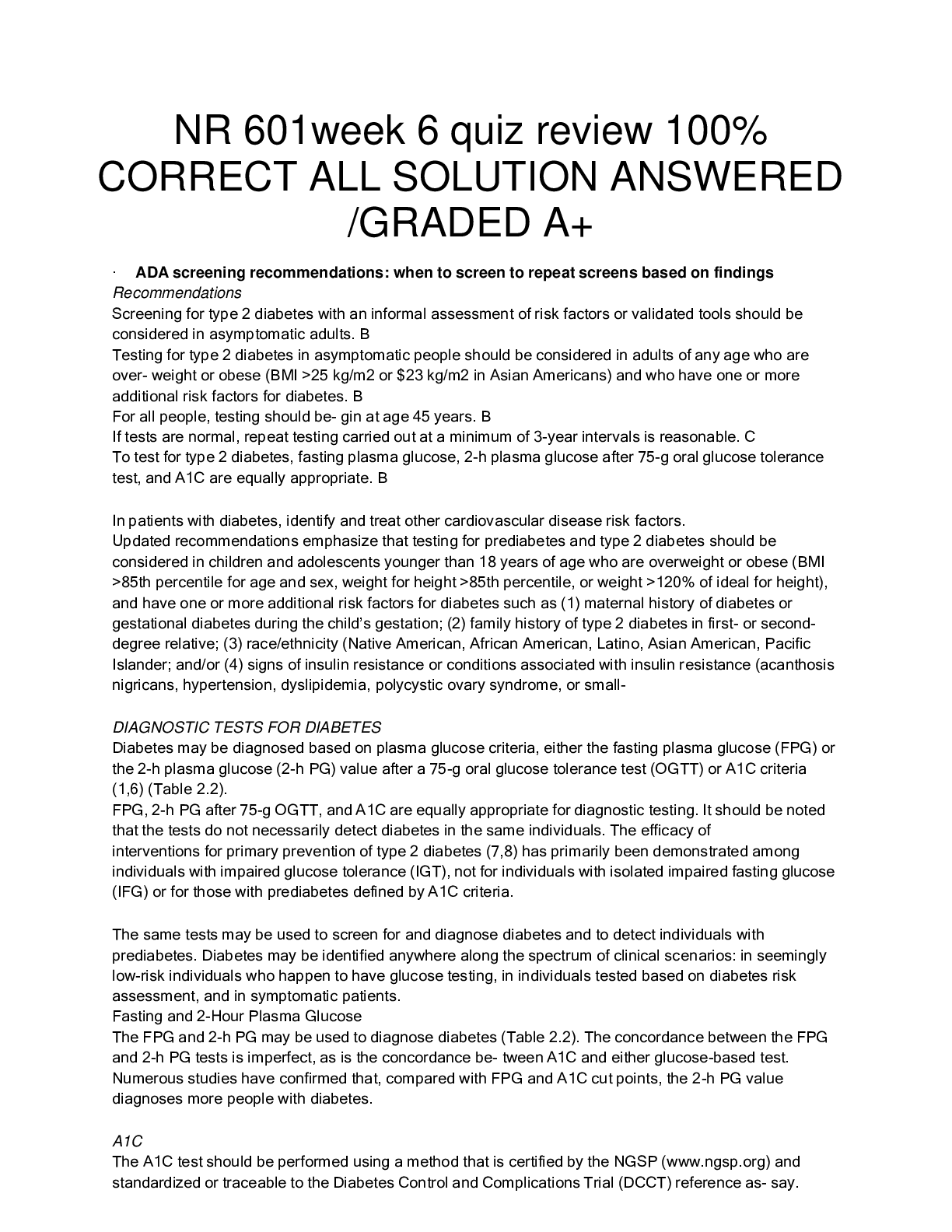*NURSING > EXAM REVIEW > Chamberlain University College of Nursing NR 565 MidTerm Review CORRECTLY DONE (All)
Chamberlain University College of Nursing NR 565 MidTerm Review CORRECTLY DONE
Document Content and Description Below
1. G-Protien coupled receptors and how they interact with drugs G-protein coupled receptors (GPCR) interact with drugs through 7 regions of proteins that span and innervate the cell membrane, and tra... p the molecule into the receptor site like an interwoven basket (Insel & Sriram, 2018). Drugs can then enter this space and interact with the GRCP. A specific interaction and binding with a site on one or more of the regions of proteins within the GPCR, and drugs bound with the GRCP can stimulate the release of G proteins that can interact with various effector proteins to create physiological responses within the body (Insel & Sriram, 2018). This process occurs through secondary messengers (such as cAMP) which creates the extracellular interactions produced by the drug binding to the GRCP. 2. What neurotransmitters are excitatory? amino acids such as glycine, aspartate, and glutamate are excitatory (Woo & Robinson, p.16, 2016). 3. Which is the most common CYP enzyme in the body? What role does it play? According to the textbook, the CYP3A4 is the most important enzyme in the body. CYP3A4 is responsible for the metabolism of more than 50% of medications and is considered a major drug metabolizing enzyme. CYP3A4 can be found in the liver, as well as the lining of the GI tract. Due to this location, food can also influence this CYP. One example of this is grapefruit juice, which can inhibit CYP3A4. Medications that are metabolized by CYP3A4 include antimicrobials, calcium channel blockers, antihistamines, anticonvulsants, azole antifungals, and corticosteroids (Woo, & Robinson, 2016). 4. What is the clinical significance of being an ultra-rapid CYP2D6 metabolizer? People who are ultra-rapid metabolizers have high activity of CYP2D6 enzymes that break down certain medicines rapidly and are likely to need different doses or even a different medicine. Drug dose, response, and toxicity risk of beta-blockers, antidepressants, antiarrhythmics, and opioid analgesics are dependent on CYP2D6 pharmacogenetics (Ayazseven et al., 2020). Knowing the result of the CYP2D6 test and which group the patient falls into such as poor metabolizers, intermediate metabolizers, or ultra-rapid metabolizers, will help nurse practitioners prescribe the right medication and dosage for the patient. 5. What would be the concern if a drug is a CYP450indicer? How that might affect the metabolism of other drug the patient is taking? Cytochrome P450 enzymes are in cells throughout the body, primarily found in liver cells (Girvan & Munro, 2016). These enzymes are essential for the metabolism of many medications. Cytochrome P450 enzymes can act as an inducer or inhibitor of metabolism. When a medication induces the CYP450 enzyme that increases the rate of [Show More]
Last updated: 1 year ago
Preview 1 out of pages

Reviews( 0 )
Document information
Connected school, study & course
About the document
Uploaded On
May 31, 2021
Number of pages
Written in
Additional information
This document has been written for:
Uploaded
May 31, 2021
Downloads
0
Views
7






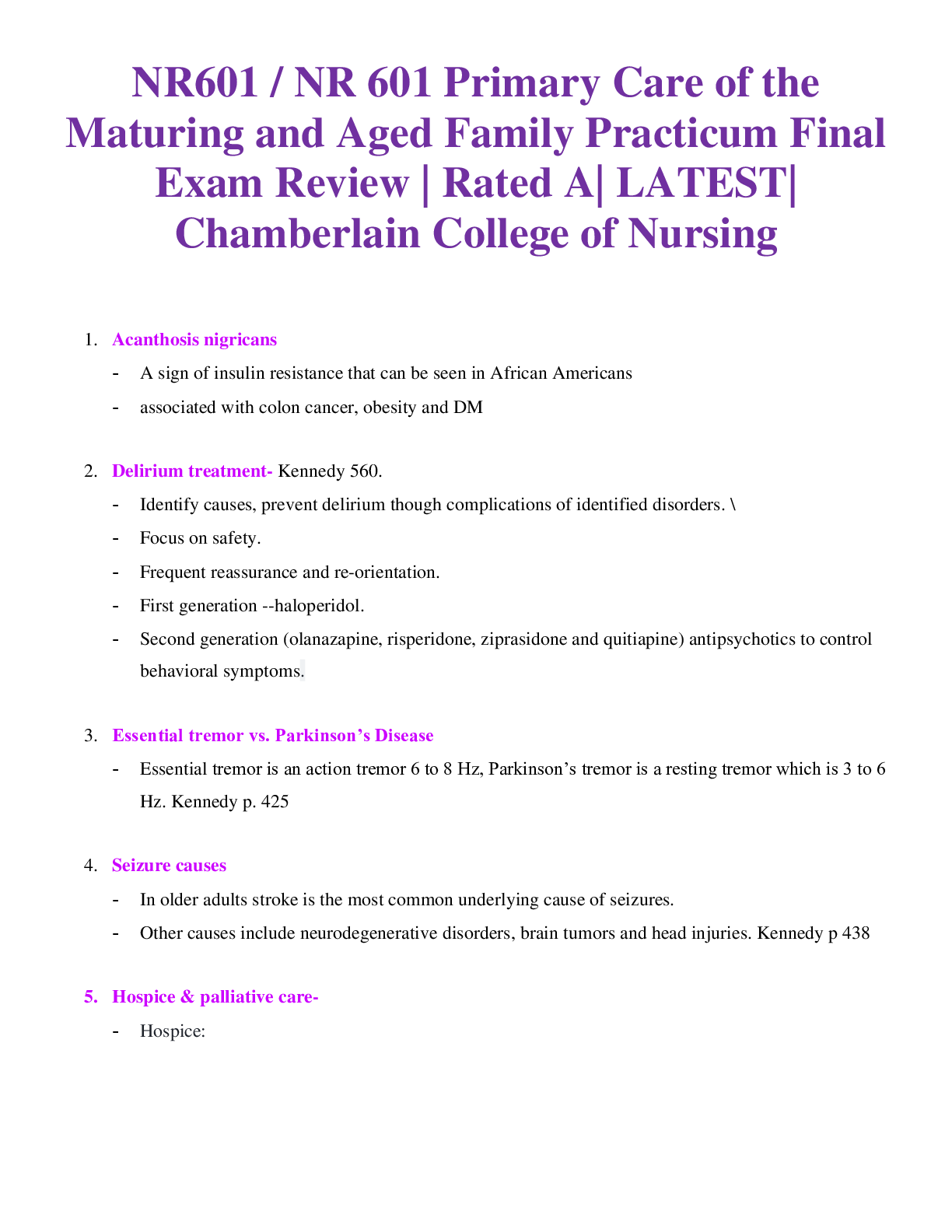
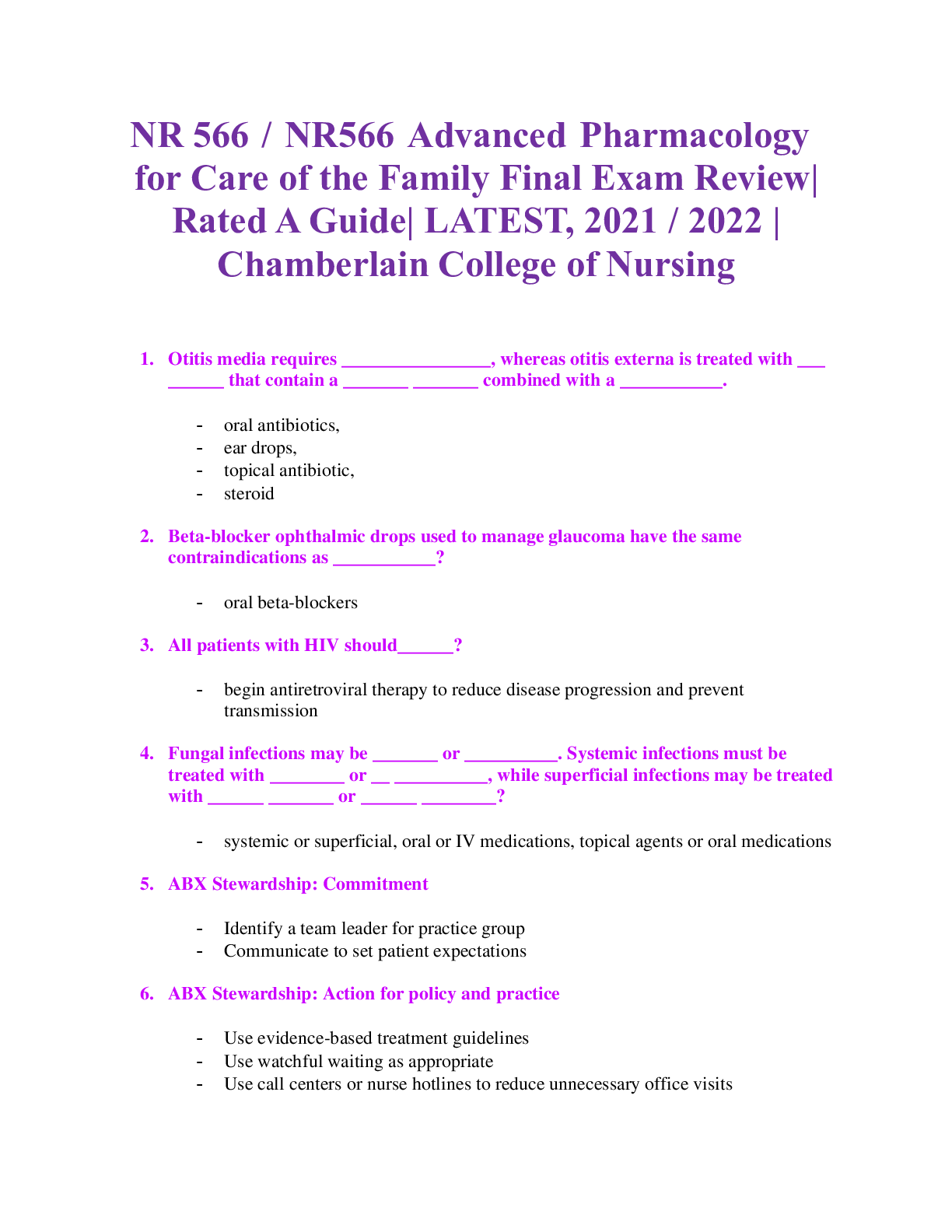
.png)

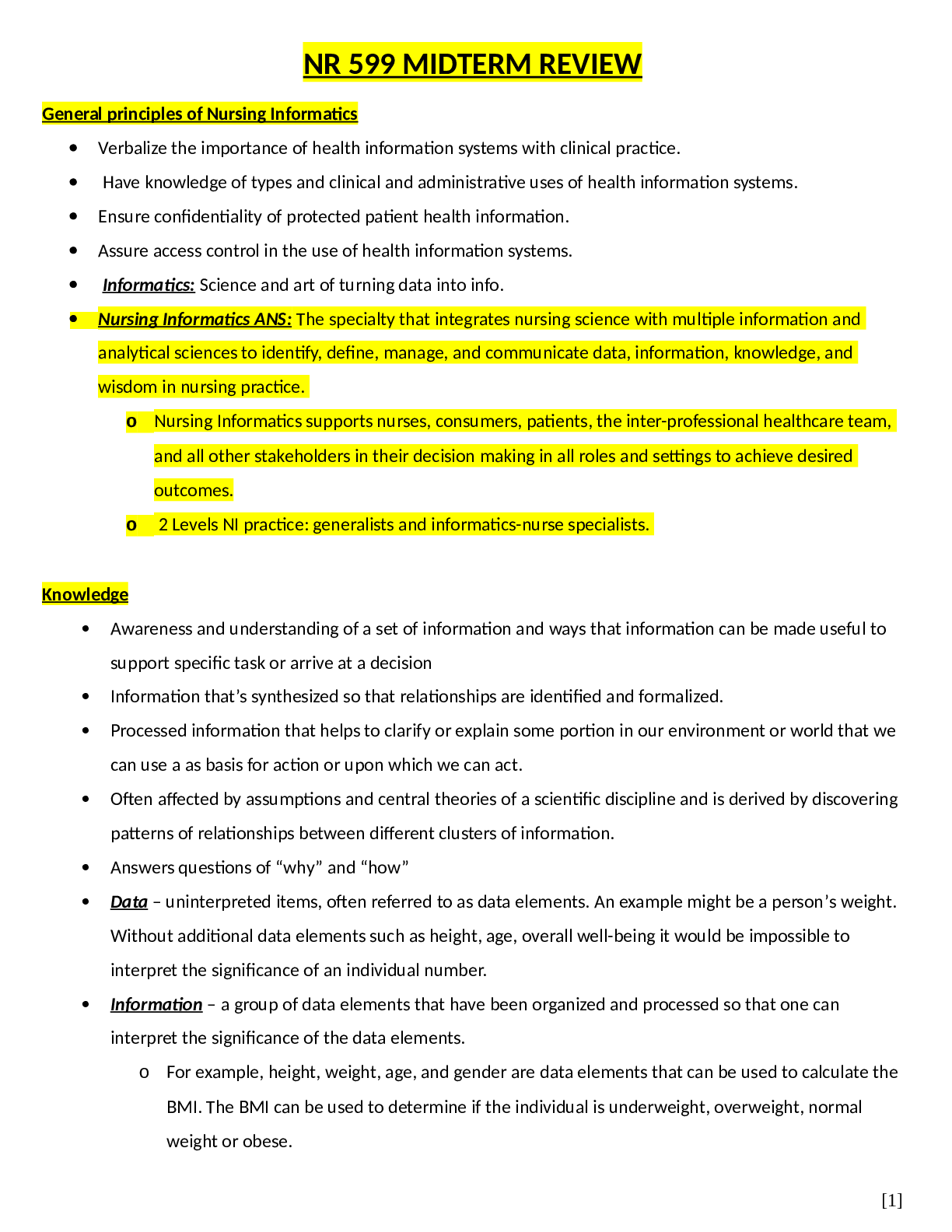
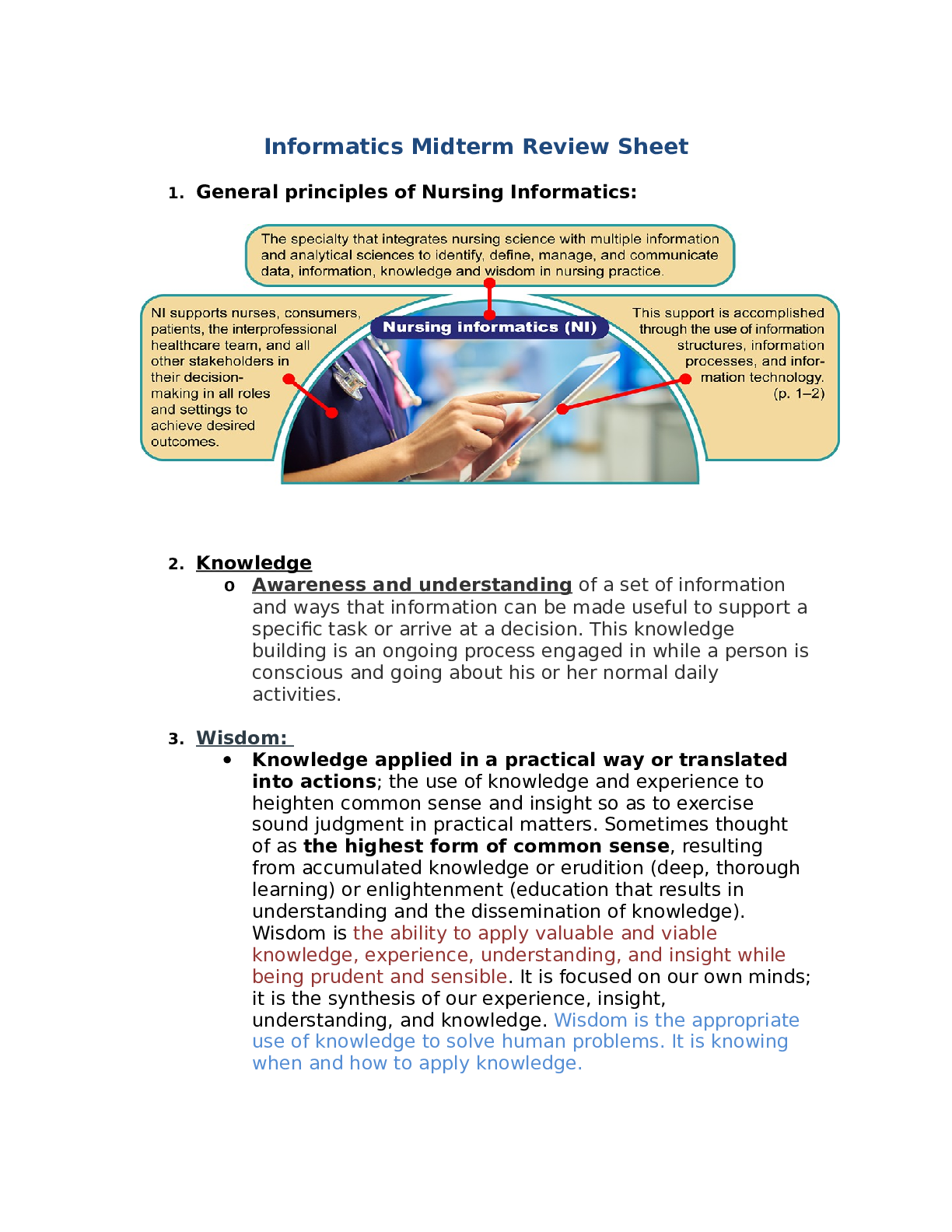
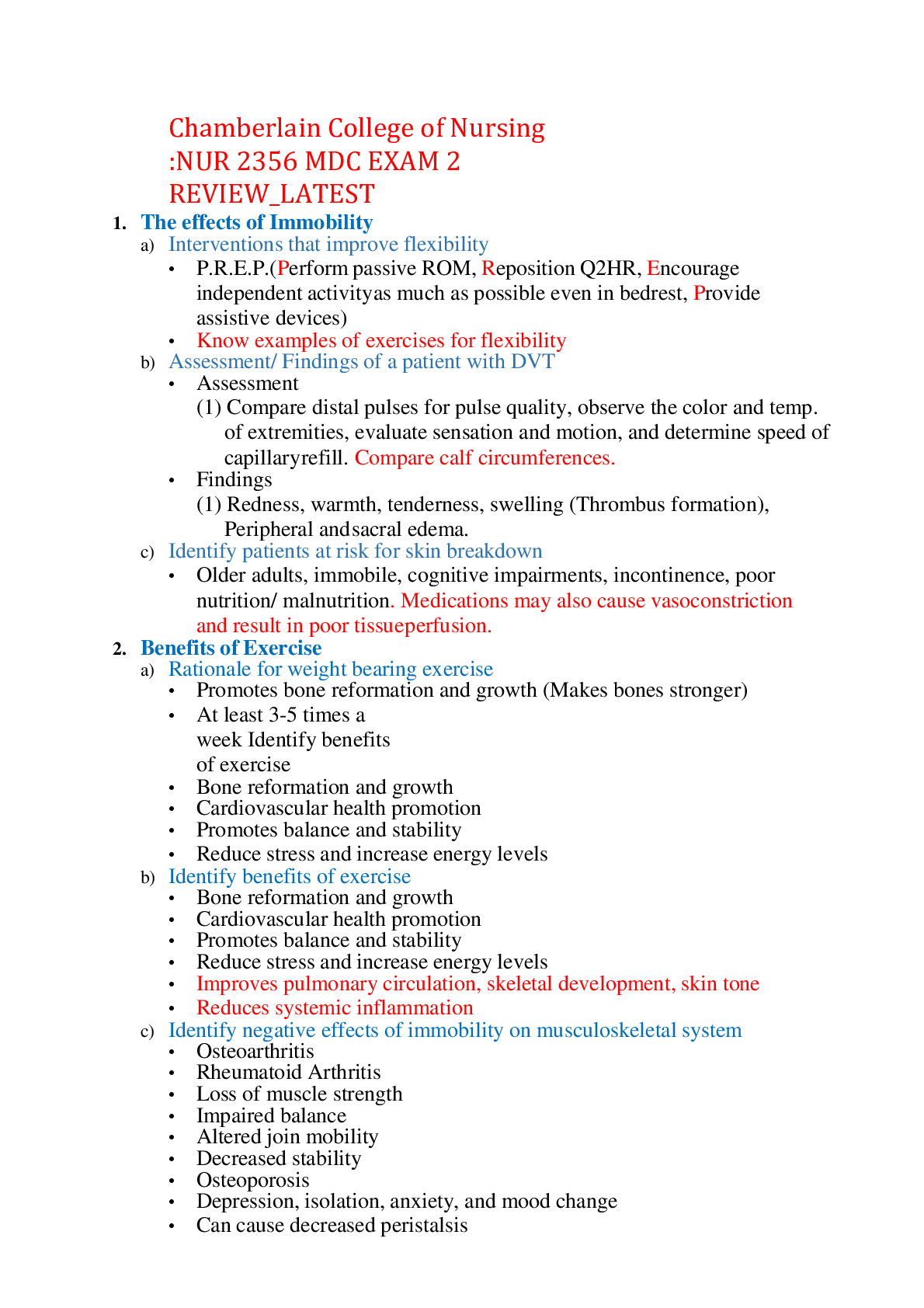
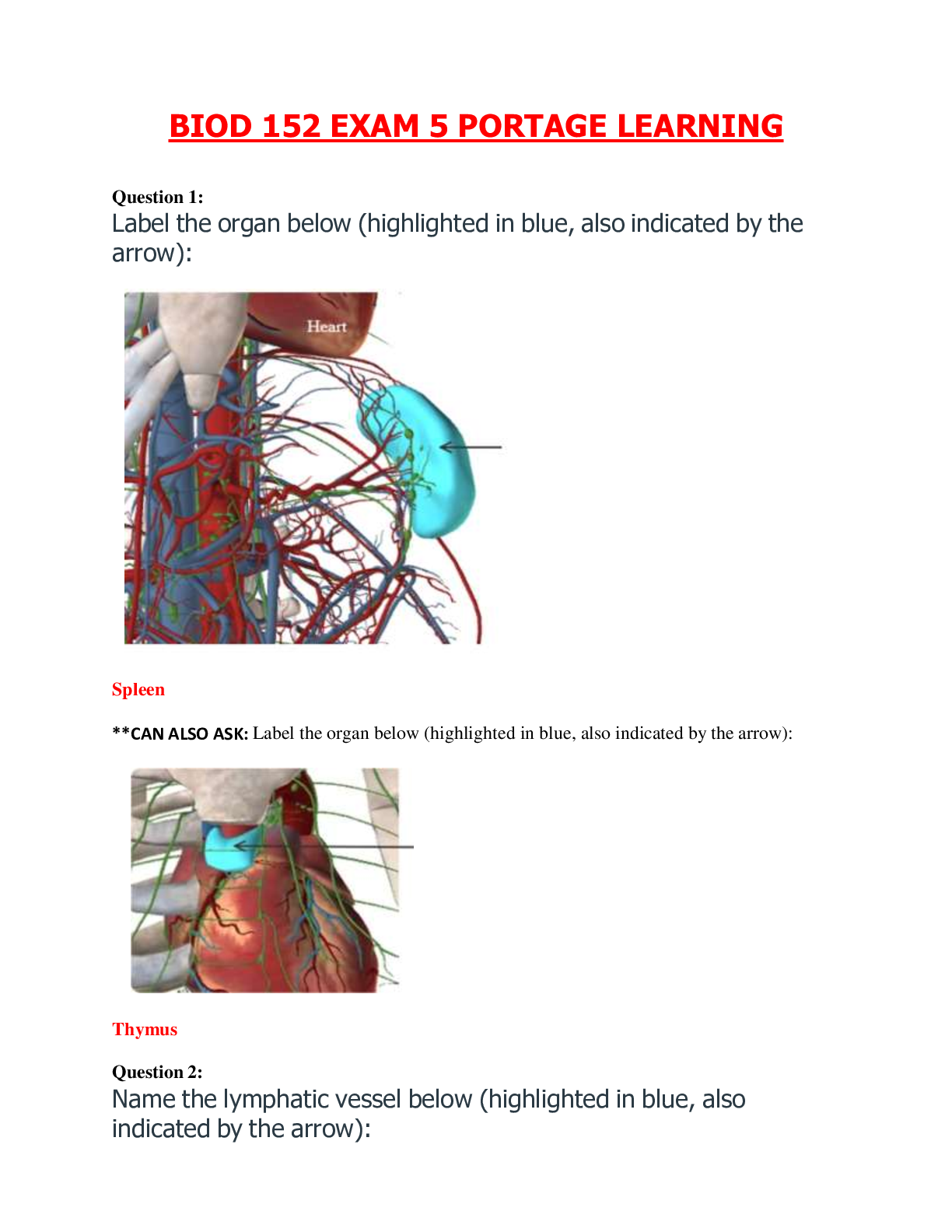
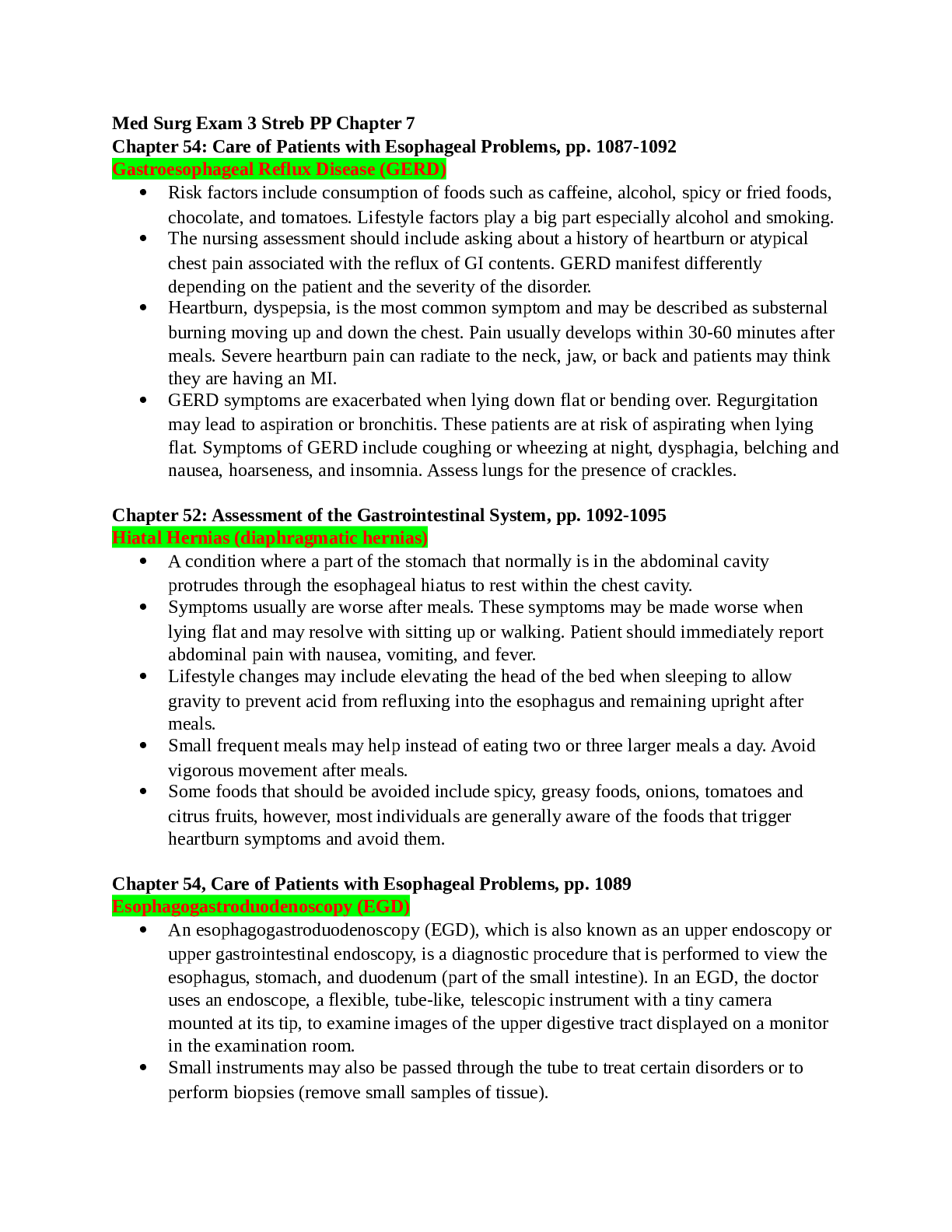
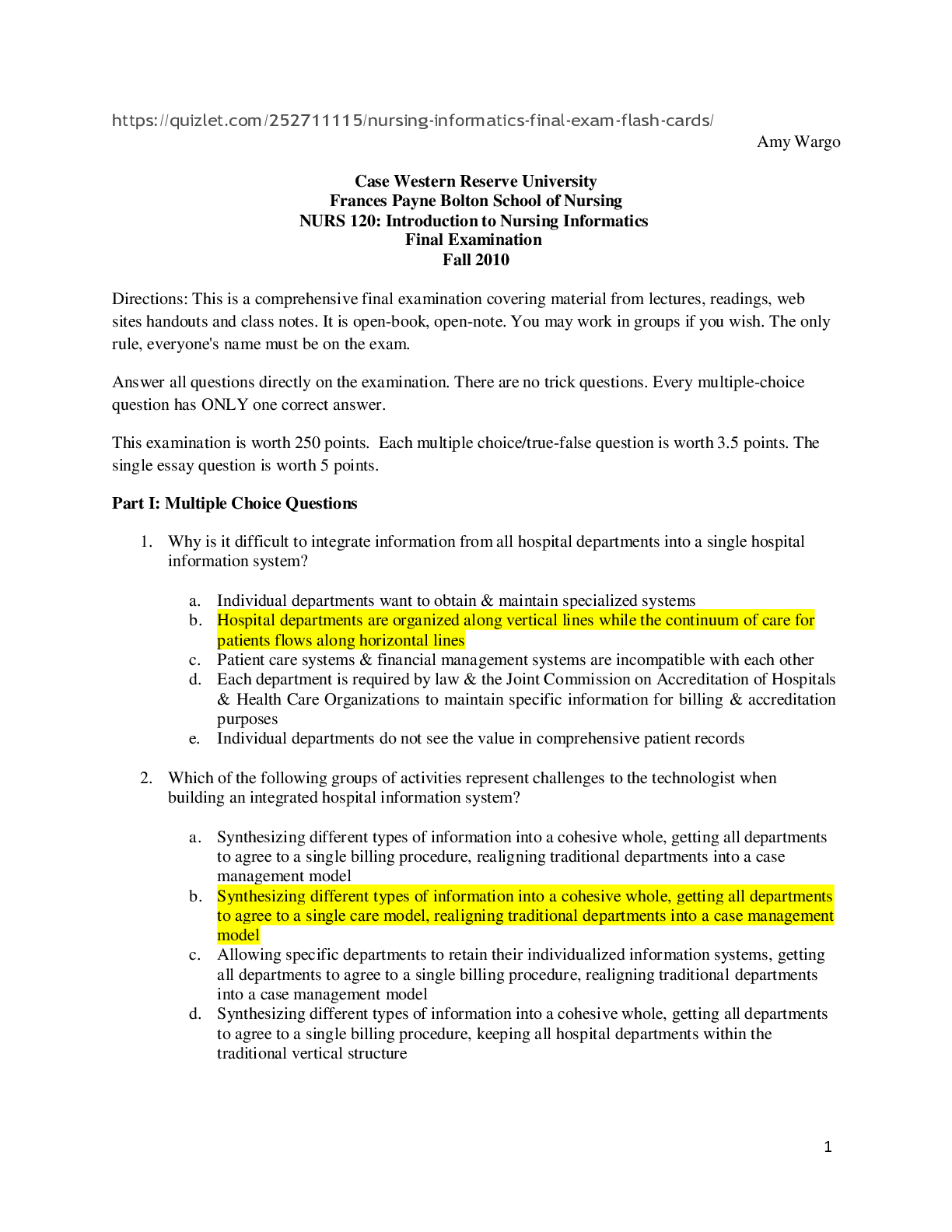
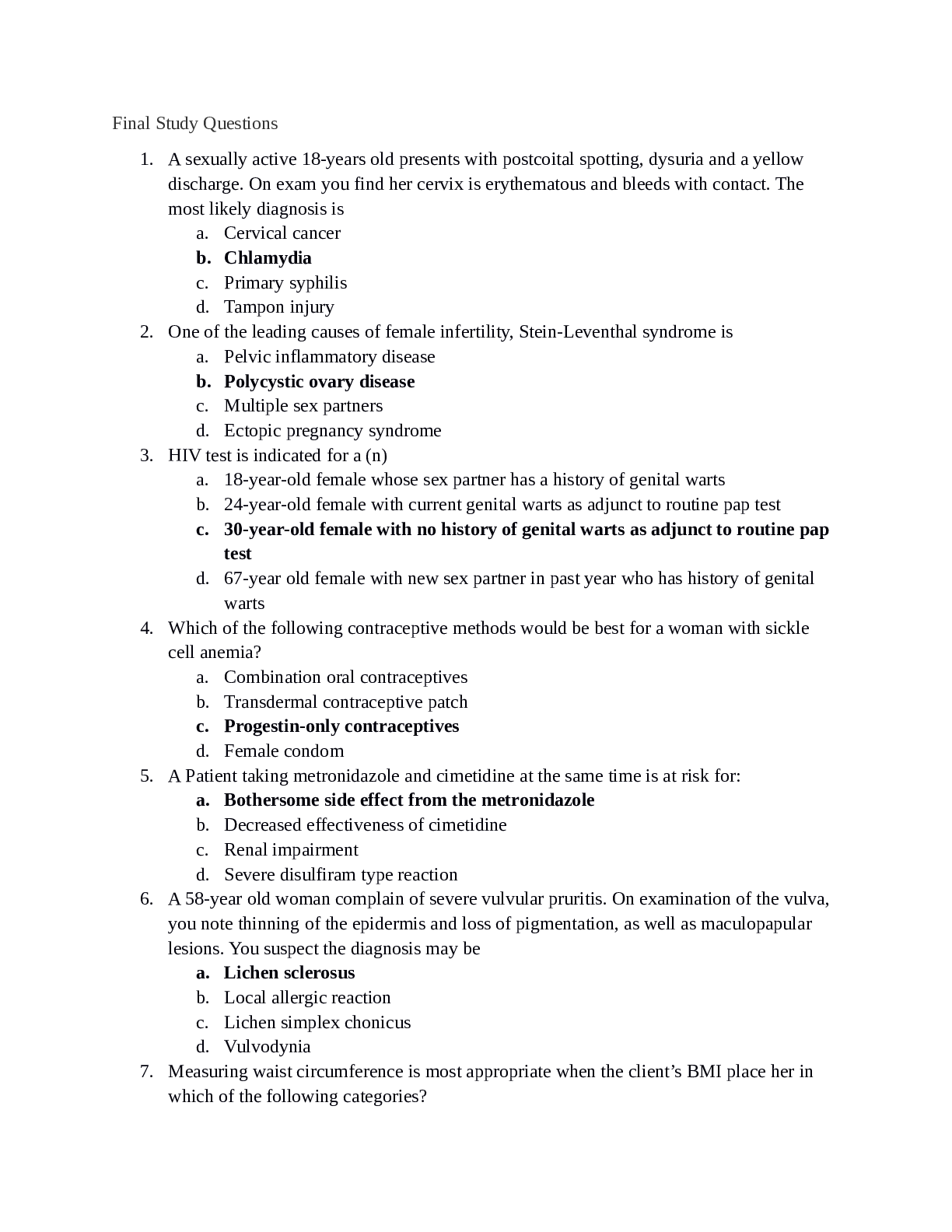
.png)
